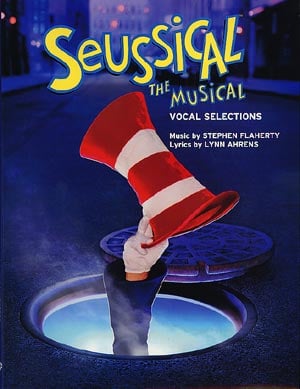
TIMES TRIBUTES--2004
Greater Cleveland is blessed with a vital theatre scene. It is the purpose of the TIMES THEATRE TRIBUTES to recognize theatrical experiences that, in the mind of this reviewer, were excellent.
I did not see all of the productions in the area, so only shows performed in 2005 that I reviewed were considered. Selections are limited to locally produced performances, so none of the professional touring shows are recognized, though actors, directors and technicians who were imported by local theatres were considered. Actors were not separated by gender or leading or supporting roles.
Thanks to the following for making the theatre scene in the Cleveland area vital and exciting:
Production
“By Jeeves,” Beck Center
‘Copenhagen,” Actors’ Summit
“Hot N Throbbing,” convergence-continuum
“Julius Caesar,” GLTF
“Leading Ladies,” CPH
‘Miss Saigon,” Beck Center
“Nickel And Dimed,” GLTF & CPT
“Our Town,” Ensemble
“Private Lives,” GLTF
“Confessions of Punch and Judy,” CPT
“Ragtime, The Musical,” JCC
“Summer of ‘42,” Kalliope
“Vincent in Brixton,” CPH
“Agnes of God,” Beck Center
“Five Guys Named Moe,” Beck Center
Director
Michael Rogaliner, “By Jeeves,” Beck Center
Gregory Vovos, “Charge,” TITLEWave THEATRE
Wayne Turney, “Lend Me A Tenor,” Actors’ Summit
A. Neil Thackberry, “Copenhagen,” Actors’ Summit
Clyde Simon. “Hot and Throbbin,” convergence-continuum
Ray Roderick, “I Love You, You’re Perfect, Now Change,” Playhouse Square
Risa Brainin, “Julius Caeser,” GLTF
Ken Ludwig, “Leading Ladies,” CPH
Seth Gordon, “Lobby Hero,” Beck Center
Scott Spence, “Miss Saigon,” Beck Center
Melissa Kievman, “Nickle and Dimed,” CPT & GLTF
Lester Currie, “Nine,” Cassidy Theatre
Victoria Bussert, “Private Lives,” GLTF
Raymond Bobgan, “Confessions of Punch and Judy,” CPT
Fred Sternfeld, “Ragtime, The Musical,” JCC
Paul Gurgol. “Summer of ‘42,” Kalliope
Seth Gordon, “Vincent in Brixton,” CPH
Victoria Bussert, “tick, tick...Boom!,” Cain Park
Seth Gordon, “Agnes of God,” Beck Center
Martin Cespedes, “Five Guys Named Moe,” Beck Center
Performance
Tracee Patterson, “Bright Room Called Day,” CPT
Charles F. Kartali, “Bright Room Called Day,”CPT
Larry Nehring, “By Jeeves,” Beck Center
Nina Domingue, “For Colored Girls Who Have Considered Suicide When the Rainbow is Enuf,” Karamu
Christopher Bohan,, “Lend Me A Tenor,” Actors’ Summit
Tina Stump, “Menopause the Musical,” Playhouse Square
June Lange, “Menopause the Musical,” Playhouse Square
Maryann Nagel, ,“Menopause the Musical,” Playhouse Square
Wayne Turney, “Copenhagen,” Actors’ Summit
A. Neil Thackaberry, “Copenhagen,” Actors’ Summit
Lucy Bredeson-Smith,“Copenhagen,” Actors’ Summit
Lavonda Elam, “Crowns,” Cleveland Play House
Angela Gillespie Winborn, “Crowns,” Cleveland Play House
Joel Hammer, “Ears on a Beatle,” Dobama
Wayne Turney, “Give “Em Hell Harry,” Actors Summit
MaryAnn Black, “Guys and Dolls, Porthouse
M. R. Culver, “Guys and Dolls,” Porthouse
Paul Floriano, “Highway Ulysses,” Dobama
Lucy Bredeson-Smith, “Hot and Throbbin,” convergence-continuum
John Regan, “Hot and Throbbin,” convergence-continuum
Tricia Bestic, Julie Hogan, Nicholas Koesters and Larry Nehring (the ensemble cast), “I Love You, You’re Perfect, Now Change,” Playhouse Square
Douglas Frederick, “Importance of Being Earnest,” GLTF
Richard Klautsch, “Julius Caeser,” GLTF
Geoffrey Hoffman, “‘La Turista” convergence-continuum
Brent Barrett, “Leading Ladies,” CPH
Christopher Duva, “Leading Ladies,” CPH
Matthew Joslyn, “Lobby Heros,” Beck Center
Robin Lee Gallo, “Miss Saigon,” Beck Center
Scott Plate, “The Last Five Years,” Dobama
Nan Wray, Sheffia W. Randall, Nina Domingue, George Roth, Tracee Patterson, Jill Levin (the ensemble cast), “Nickle and Dimed,” GLTF & CPT
Robert McCoy, “Of Mice and Men,” Beck Center
Greg DeTorto, “Of Mice and Men,” Beck Center
Andrew May, “Private Lives,” GLTF
Laura Perotta, “Private Lives,” GLTF
Tannis Kowalchuk, “Confessions of Punch and Judy,” CPT
Ker Wells, “Confessions of Punch and Judy,” CPT
Kyle Primous, “Ragtime, The Musical,” JCC
Maggie Stahl Wirfel, “Ragtime, The Musical,” JCC
Sean Szaller, “Ragtime, The Musical,” JCC
Sandra Emeric, Joseph and His Amazing Technicolor Dreamcoat,” Beck Center
Tracee Patterson, “Seussical, The Musical,” Beck Center
Andrew May, “Taming of the Shrew,” GLFT
Laura Perrotta, “Taming of the Shrew,” GLFT
Alex Wyse, “Summer of ‘42,” Kalliope
Jodi Brinkman, “Summer of ‘42,” Kalliope
Nina Dominque, “Uncle Tom’s Cabin,” CPT
George Roth, “Uncle Tom’s Cabin,” CPT
Simon Kendall, “Vincent in Brixton,” CPH
Patrick Janson, ‘tick, tick...Boom!,” Cain Park
Emily Keieger, ‘tick, tick...Boom!,” Cain Park
Lucy Bredeson-Smith, “Tone Clusters,” convergence-continuum
Clyde Simon, “Tone Clusters,” convergence-continuum
Renee Matthewws-Jackson, “Bee-Luterh-Hatchee,” Karamu Theatre
Sherri Briton, “Agnes of God,” Beck Center
Alicia Kahn, “Agnes of God,“ Beck Center
Kyle Primous, “Five Guys Named Mo,” Beck Center
Technical
Trad Burns, set design, “Bright Room Called Day,” CPT
Zach Humes, sound design, “Charge,” TITLEWave THEATRE
Richard Morris, Jr., light and stage design, “For Colored Girls Who Have Considered Suicide When the Rainbow is Enuf, ” Karamu
Tony Straiges, scenic design, “Enchanted April,” CPH
Alejo Vietti, costume design, “Enchanged April,” CPH
Gage Williams set design, “Importance to Being Earnest,” GLTF
Kim Krumm Sorenson, costume design, “Importance to Being Earnest,” GLTF
Todd Krispinsky, set design“Nickle and Dimed,” GLTF & CPT
John Ezell, sets design, “Private Lives,” GLTF
Charlotte Yetman, costumes, “Private Lives,” GLTF
Richard Gould, set design, “Ragtime, The Musical,” JCC
Dana Romeo, costume design, “Ragtime, The Musical, JCC
Russ Borski. scenic design, “Summer of ‘42,” Kalliope
Kim Brown, costume design, “Summer of ‘42,” Kalliope
Richard Morris, ”Bee-Luther-Hatchee,” Karamu Theatre
Choregraphy
MaryAnn Black, “Godspell,” Porthouse
Martin Cespedes, “Miss Saigon,” Beck Center
Janiece Kelley-Kiteley, “Anything Goes,” Carousel Dinner Theatre
Martin Cepedes, “Ragtime, The Musical,” JCC
Martin Cespedes, “Seussical, The Musical,” Beck Center
Musical Direction
Larry Goodpaster, “By Jeeves,” Beck Center
Brian Laakso, “Godspell,” Porthouse
Josh Senick, “Highway Ulysses,” Dobama
Larry Goodpaster, “Miss Saigon,” Beck Center
David Dettloff, “Nine,” Cassidy Theatre
David Williams, “Five Guys Named Mo,” Beck Center






